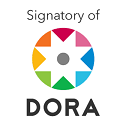Internal control for the cashier area. Case study: COAC Pushak Runa Ltda
Abstract
The objective of the research was to analyze internal control for the cashier area. Case study: COAC Pushak Runa Ltda. The methodology was supported by the COSO III model questionnaire, as a diagnostic tool for the five components of the internal control system. The results allowed the identification of the elements of the company that represent a weakness or risk in the institution in the risk management component, the elements of the company that represent a weakness or risk in the company in the component of control activities are identified. the elements of the institution that represent a weakness or risk in the company in the information and communication component are identified. In conclusion, risk management has become everyone's responsibility because it is directly related to the fulfillment of the organization's strategic objectives.
Downloads
References
Estupiñán, R. (2016). Control interno y fraudes, Análisis de informe Coso I, II y III con base en ciclos transaccionales. [Internal control and fraud, Coso I, II and III report analysis based on transactional cycles]. (3ª ed.). Bogota: Ecoe ediciones.
Fonseca Luna, O. (2011). Sistema de control interno para organizaciones. [Internal control system for organizations]. (1ª ed.). Lima, Perú: Instituto de Investigaciones en Accountability y Control.
Mayorga Díaz, M. P., y Llagua Tubón, V. G. (2018). La evaluación del sistema del control interno como soporte estratégico en la gestión de objetivos en las finanzas populares del Ecuador. [The evaluation of the internal control system as strategic support in the management of objectives in popular finances of Ecuador]. Apuntes Contables, 117-126. https://doi.org/10.18601/16577175.n21.09
Naranjo, C. (2011). La Ley de Economía Popular y Solidaria del Ecuador, en Reformas legislativas en el derecho social y solidario iberoamericano. [The Law of Popular and Solidarity Economy of Ecuador, in Legislative reforms in Ibero-American social and solidarity law]. Memorias I Semana Internacional de la Economía Social y Solidaria, Ed. Fundación Divina Pastora.
Morales Noriega, A. (2018). El sistema cooperativo de ahorro y crédito del Ecuador a través de la historia. [The cooperative savings and credit system of Ecuador throughout history]. Observatorio de la Economía Latinoamericana. https://n9.cl/26hi9
Lampis, M., y Piñerez, C. (2016). Evaluación de los procesos de mejoramiento del sistema de riesgo y control interno de la empresa PUPU y PUPO S.A de la ciudad de Montería a noviembre de 2016. [Evaluation of the improvement processes of the risk and internal control system of the company PUPU and PUPO S.A of the city of Montería as of November 2016]. Colombia: Universidad Cooperativa de Colombia.
Poder Legislativo (2018). Constitución de la República del Ecuador [Constitution of the Republic of Ecuador]. Registro Oficial 449 de 20-oct.-2008 Ultima modificación: 01-ago.-2018. https://n9.cl/zy5f
Ramírez Díaz, L. F., Herrera Ospina, J. de J., y Londoño Franco, L. F. (2016). El Cooperativismo y la Economía Solidaria: Génesis e Historia. [Cooperatives and the Solidarity Economy: Genesis and History]. Cooperativismo y Desarrollo, 24(109). https://doi.org/10.16925/co.v24i109.1507
Vivanco Vergara, M. E. (2017). Los Manuales De Procedimientos Como Herramientas De Control Interno De Una Organización. [Procedure Manuals as Internal Control Tools of an Organization]. Universidad y Sociedad, 9(3), 247-252. https://n9.cl/mh3ll
Copyright (c) 2024 José Ernesto Mazabanda Agualongo, Abel Isaías Tiche Andagana, Sonia Alicia Tipan Pilamunga, Mónica Patricia Mayorga Díaz

This work is licensed under a Creative Commons Attribution-NonCommercial-ShareAlike 4.0 International License.
CC BY-NC-SA : Esta licencia permite a los reutilizadores distribuir, remezclar, adaptar y construir sobre el material en cualquier medio o formato solo con fines no comerciales, y solo siempre y cuando se dé la atribución al creador. Si remezcla, adapta o construye sobre el material, debe licenciar el material modificado bajo términos idénticos.
URL de OAI-PMH: https://iieakoinonia.org/ojs3/index.php/gestioep/oai














